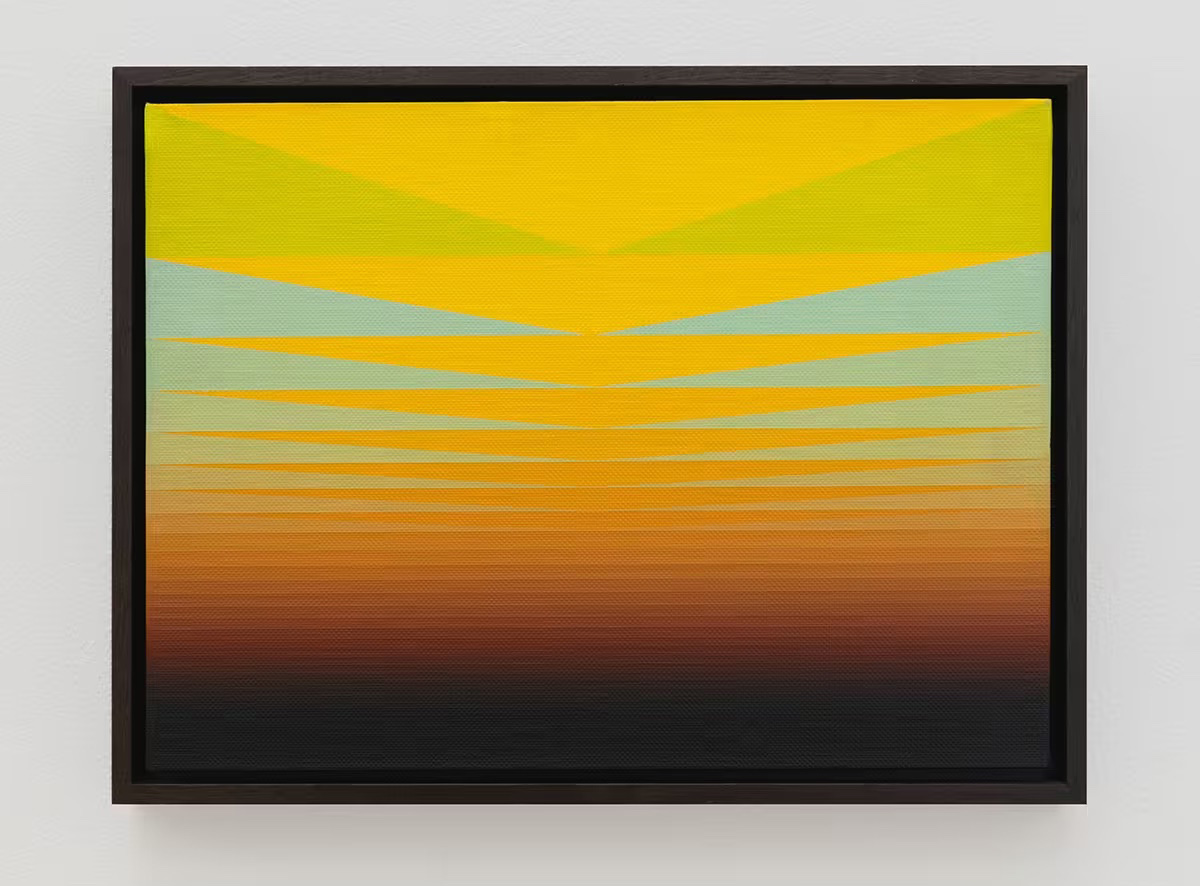
August 17, 2024
Download as PDF
View on The Wall Street Journal
The odds against Norman Zammitt (1931-2007) becoming a significant Southern California artist—especially a painter of gigantic hard-edge abstractions—were fairly great. He was born in Toronto and raised on the Caughnawaga Indian Reservation in Canada. The possibility that his work would be the subject of a museum retrospective was even slimmer. But Zammitt accomplished both these things. “Norman Zammitt: Gradations” (at the Palm Springs Art Museum, curated by Sharrissa Iqbal, through Oct. 7) contains 47 works that reveal him to be an artist whose large horizontal-stripe paintings are at least the equal of Kenneth Noland’s, and whose sense of color, if not quite the equivalent of Ellsworth Kelly’s, is at least a worthy neighbor to it.
Zammitt moved to California in his teens; after high school he joined the Air Force, which deployed him to Korea as a photographer. Afterward, he attended Pasadena City College and the Otis Art Institute, where he earned a master of fine arts degree. Diploma in hand, he then taught at several schools, including the University of New Mexico, the University of Southern California and the University of California, Los Angeles. Early on, Zammitt exhibited landscape paintings (with ventures into surrealism and semi-abstraction), at the Felix Landau Gallery—in those days one of the best in Los Angeles. Soon, however, he began exploring Minimalism, using plexiglass and molded acrylic resin as his materials. In 1968—before he started making the work that got him on the contemporary art scoreboard, so to speak—he was awarded a Guggenheim Fellowship. That Zammitt nevertheless remained a bit of an outsider throughout his career is indicated by his receiving a Pollock-Krasner grant—a fellowship for artists with demonstrated financial need—as late as 1991.
Always open to employing current technology, Zammitt purchased an early desktop computer and had a program made especially for him that helped create ultra-fine gradations of color. This, in addition to his developing logarithmic progressions of chroma (he weighed the pigments he put into his paints with calculations derived from a graph), ultimately led to the huge horizontal-band paintings in “Gradations.” As the artist himself wrote in a 1972 notebook entry: “The banded paintings were a very disciplined adventure into the fundamentals of color and design. It was a reductive process to try to show color on a grand scale without introducing subject matter, shapes, or figurative or descriptive shapes and images but would by color itself, represent an abstraction or abstract statement of the basics of life and our perception of reality.” (Yes, it reads a bit grandiose and hokey, but artists don’t think or write like accountants or lawyers.)
Zammitt’s best paintings—and the work for which he’s generally remembered—are his enormous (up to 20 feet across) horizontally striped canvases. The progress of stripes in “North Wall” (1976), for example, runs from the top downward through the hues of white, yellow, orange and red, alternating with black and then, near the bottom, blue. The painting is chromatically raucous in its particulars yet somehow pleasingly restful as a whole. “Caly-forny-ay” (1987), the biggest work in the show, is a triptych with the panels abutting each other. The bands in the two outside panels proceed, top to bottom, from sky blue to white, then to yellow and hot orange down to, at the very bottom, black. The center canvas is seascape-like, descending from a foggy gray through faint pinks and oranges to black at the bottom. The subtle disjunction between the center and wings of the work gives it some needed crackle, and it intimates something about the distinctive light in Southern California.
On the long museum walls to either side of Zammitt’s gigantica are single, widely spaced rows of paintings about the size of a premium paperback book, with equal-height horizontal stripes. Although they lack the grandeur of the painter’s larger work, because the viewer is drawn in rather than stunned, the small panels demonstrate the delicious musicality of color somewhat more effectively.
This retrospective includes one large painting, “Triptych XI” (1992), that’s a product of Zammitt’s perhaps inevitable late diversion into fractals—geometric figures containing an infinite number of repetitions of themselves, which have fascinated artists from multiple cultures since ancient times. Seen from a distance, the work suggests a vague landscape with a brackish night sky blending downward into blue before turning brown. Up close, however, “Triptych” contains rough whitish outlines of interlocking fractal shapes. “Triptych” is an outlier, and not a particularly illuminating one.
“Gradations” makes not only its intended point that Zammitt is an underrated artist, but also another, unintended one: However fascinating the mathematical scaffolding an artist leans on to support abstract work, all that matters in the end is how it looks. Zammitt’s luminous paintings have looked good enough for long enough for him to be considered a major California painter. Afterthought: I wish that there had been a much needed and deserved catalog to make that point more permanent.



